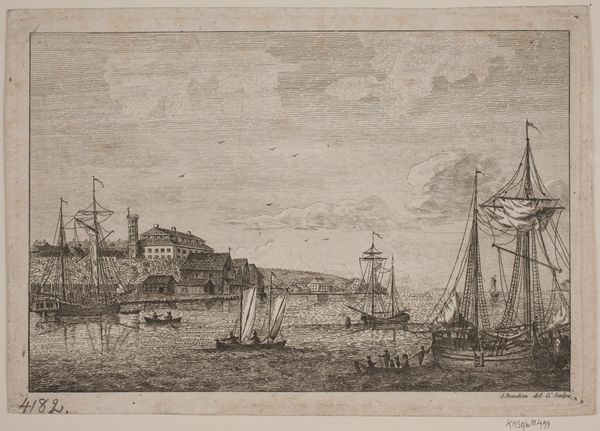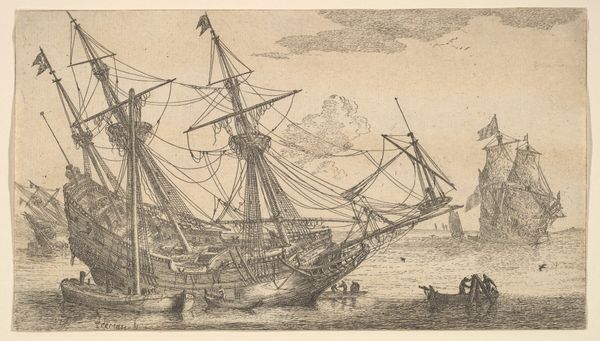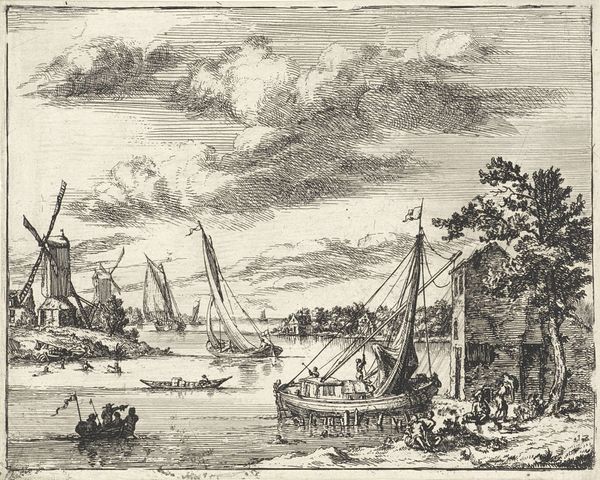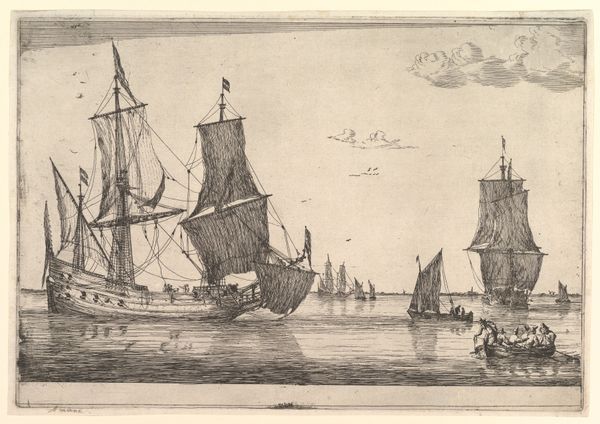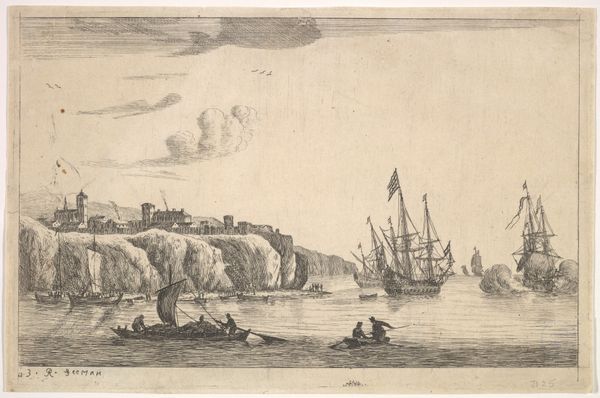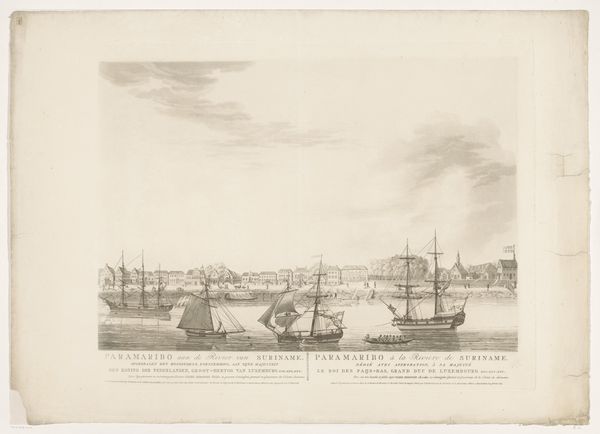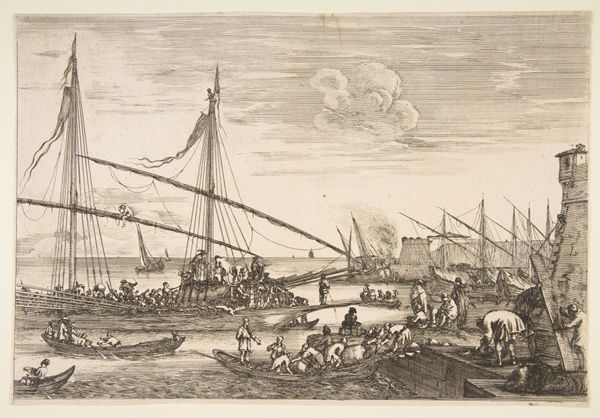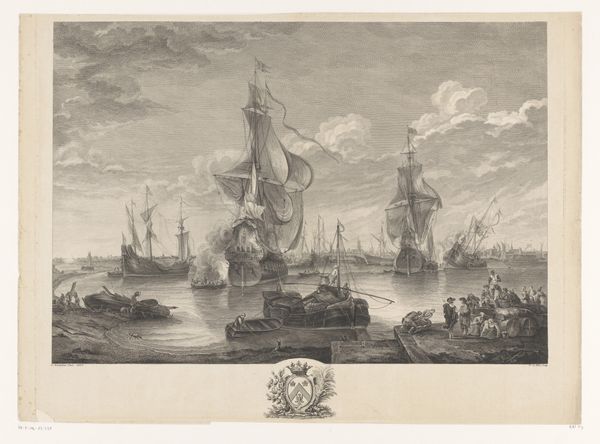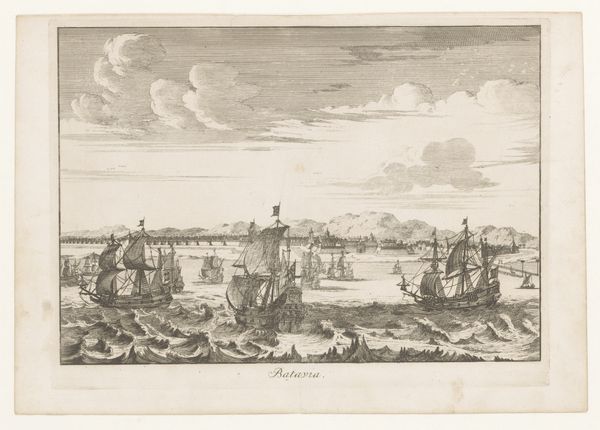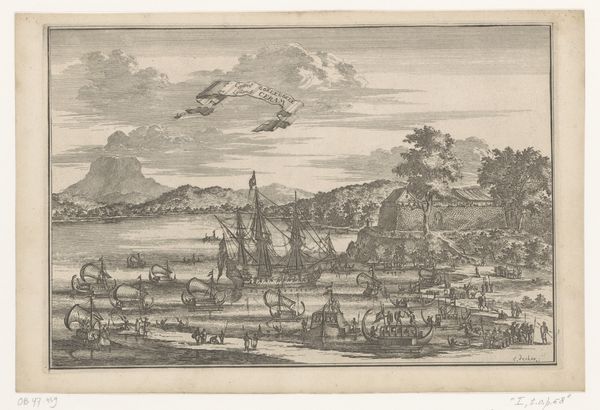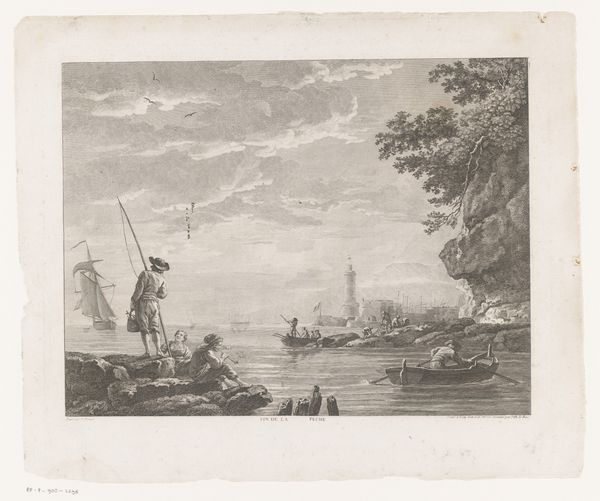
print, etching
#
baroque
# print
#
etching
#
landscape
#
cityscape
Dimensions: height 292 mm, width 360 mm
Copyright: Rijks Museum: Open Domain
Curator: Here we have "Gezicht op Dabhol," an etching from 1672, found here in the Rijksmuseum. Editor: My first impression is the contrast. It feels very documentary, but also stylized. There’s so much detail packed into a relatively small space using etching as the primary process. Curator: Indeed. Etchings allowed for relatively inexpensive reproduction and distribution of images, a critical function in an era of burgeoning global trade and colonization. The proliferation of these prints shaped European perceptions of distant lands. Editor: Let's talk about labor for a moment. Think of the person or persons creating the copper plate through intense, manual work. This person must have a profound connection to the marketplace for prints to reach widespread audiences. Curator: That’s an excellent point. The choice of subject, Dabhol, a coastal city in India, also speaks volumes. It highlights the Dutch East India Company's interest in projecting images of its global reach and commercial power back to Europe. Dabhol itself was a strategic port and an arena for European powers and local authorities. Editor: Exactly. The visual language isn't accidental either. The placement of ships, and even the type of vessels in use are important to observe. Curator: Absolutely, the scene's composed to convey activity, trade, and control. Note the imposing structure along the coastline and on hillsides, which signify Dutch infrastructure. The fort is a strong symbol in this case. Editor: Yet the very act of creating these images contributed to a colonial narrative, even if the artist didn't have any explicit political intentions. Consumption becomes crucial; those images had an impact on colonial perceptions of labor overseas. The act of producing these etchings must have created awareness among other trades in the studio space. Curator: Right, the production of imagery around Dutch exploits becomes part of an evolving public culture. Editor: Thank you. It’s fascinating how deeply we can delve into historical dynamics using material details and social consumption in the art form. Curator: A compelling reminder that what may appear as simple landscape views are actually very complex articulations of power.
Comments
No comments
Be the first to comment and join the conversation on the ultimate creative platform.
